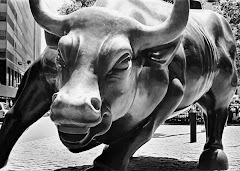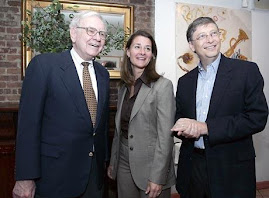Sword of Damocles
Year 2007 is really a big bull year for many Asia stock markets including Singapore. The Bull Run was felt in early of the year and stretch all the way to July where US subprime woes stopped the momentum immediately. The Bull Run turned into panic selling. However, this panic lasted for about 2 months and then the bull continue the charge. In end Sep 2007, STI continue to set new historical record while the sword of Damocles is still hanging over our head. Actually there are two swords, in my opinion. One is still whether the subprime problem will escalate into an all round recession. It may take more time for full impact to be felt. The second one is the rising oil price. While oil price had triggered a few recessions in the past, somehow Mr. Market ignored this risk this time. Oil price triggered recessions occurs in:
including Singapore. The Bull Run was felt in early of the year and stretch all the way to July where US subprime woes stopped the momentum immediately. The Bull Run turned into panic selling. However, this panic lasted for about 2 months and then the bull continue the charge. In end Sep 2007, STI continue to set new historical record while the sword of Damocles is still hanging over our head. Actually there are two swords, in my opinion. One is still whether the subprime problem will escalate into an all round recession. It may take more time for full impact to be felt. The second one is the rising oil price. While oil price had triggered a few recessions in the past, somehow Mr. Market ignored this risk this time. Oil price triggered recessions occurs in:
1974 – Oil price surged to US$25 a barrel (around US$40 a barrel in today’s dollar value)
1982 – Iraq and Iran war. Oil price reached all time high of US$35 a barrel (around US$90 a barrel in today’s dollar value)
1991 – Iraq invasion of Kuwait. Oil price rise above US$30 a barrel
But now the oil price is above US$80 a barrel. If this is not a Damocles sword, what is? As such, I decided to run instead of following the stock market madness.
Contrarian Approach
In a contrarian approach, you take a different view/direction compare to the general market; people buy, you sell. Other than the problem of short-termism, I personally agree with a contrarian approach but must be use with care. I do not agree using it indiscriminately. If the economic fundamental or a company's fundamental is sound, contrarian is silly. But if overall market is shaky and still index is rising like no tomorrow, this approach make all sense. Like I always say, "do not follow the crowd". In my opinion, now is the right time to deploy this approach. I am going to cut my portfolio by 30% and keep it in the form of cash/CPF.
Year 2007 is really a big bull year for many Asia stock markets
 including Singapore. The Bull Run was felt in early of the year and stretch all the way to July where US subprime woes stopped the momentum immediately. The Bull Run turned into panic selling. However, this panic lasted for about 2 months and then the bull continue the charge. In end Sep 2007, STI continue to set new historical record while the sword of Damocles is still hanging over our head. Actually there are two swords, in my opinion. One is still whether the subprime problem will escalate into an all round recession. It may take more time for full impact to be felt. The second one is the rising oil price. While oil price had triggered a few recessions in the past, somehow Mr. Market ignored this risk this time. Oil price triggered recessions occurs in:
including Singapore. The Bull Run was felt in early of the year and stretch all the way to July where US subprime woes stopped the momentum immediately. The Bull Run turned into panic selling. However, this panic lasted for about 2 months and then the bull continue the charge. In end Sep 2007, STI continue to set new historical record while the sword of Damocles is still hanging over our head. Actually there are two swords, in my opinion. One is still whether the subprime problem will escalate into an all round recession. It may take more time for full impact to be felt. The second one is the rising oil price. While oil price had triggered a few recessions in the past, somehow Mr. Market ignored this risk this time. Oil price triggered recessions occurs in:1974 – Oil price surged to US$25 a barrel (around US$40 a barrel in today’s dollar value)
1982 – Iraq and Iran war. Oil price reached all time high of US$35 a barrel (around US$90 a barrel in today’s dollar value)
1991 – Iraq invasion of Kuwait. Oil price rise above US$30 a barrel
But now the oil price is above US$80 a barrel. If this is not a Damocles sword, what is? As such, I decided to run instead of following the stock market madness.
Contrarian Approach
In a contrarian approach, you take a different view/direction compare to the general market; people buy, you sell. Other than the problem of short-termism, I personally agree with a contrarian approach but must be use with care. I do not agree using it indiscriminately. If the economic fundamental or a company's fundamental is sound, contrarian is silly. But if overall market is shaky and still index is rising like no tomorrow, this approach make all sense. Like I always say, "do not follow the crowd". In my opinion, now is the right time to deploy this approach. I am going to cut my portfolio by 30% and keep it in the form of cash/CPF.
In early Oct 2007, I started keying in my selling orders at night through internet platform. I keyed in my sell order for Lee Metal at $0.275 a share based on the offering price at the end of the day. However, the when market re-opens the next day, Lee Metal’s opening price was actually $0.28 and subsequently surged just above $0.30. This means that people are willing to buy at a higher price than my intended selling price. Because my selling price was too low, exchange platform adjusted such that my traded price was actually done at the opening price of $0.28 a share.
And again a few years later, I keyed in my order to sell Pacific Healthcare at $0.44 a share. I love to keep Pacific Healthcare but with current market situation, I might need to get out and then come in again with good bargains. Shockingly, when market re-opens, the opening price was $0.465! Similarly, my trade was done at the opening price instead. Therefore, when market is bullish, people are willing to pay higher price and “I can’t sell too cheaply”. This phenomenon only occurs in a bullish market/stocks.
It’s a bonus to me.
And again a few years later, I keyed in my order to sell Pacific Healthcare at $0.44 a share. I love to keep Pacific Healthcare but with current market situation, I might need to get out and then come in again with good bargains. Shockingly, when market re-opens, the opening price was $0.465! Similarly, my trade was done at the opening price instead. Therefore, when market is bullish, people are willing to pay higher price and “I can’t sell too cheaply”. This phenomenon only occurs in a bullish market/stocks.
It’s a bonus to me.



